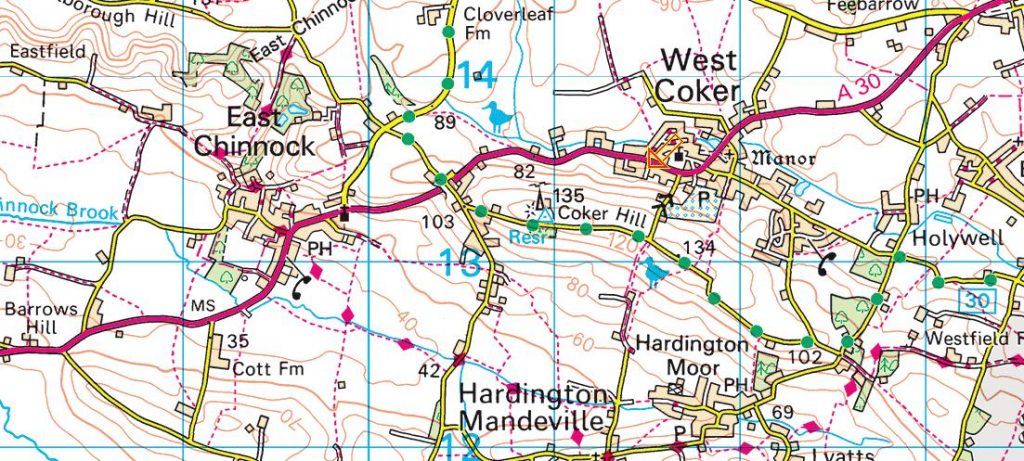The Coker Hill Haunting 1: Dramatis Personae March 2, 2018
Author: Beach Combing | in : Modern , trackbackBeach has recently become interested in a nineteenth-century ghost case from Somerset in southern England that has it all: there are witches, there are sprites, there are magpies, there are spells and counter spells, there is a spirit that rolls around the room, and there is a magic lantern. There are unfortunately few sources: only two newspaper articles in the BNA archive.
Anyway, first the setting and actors in this tragic-comedy-mystery from 1880. Coker Hill is a hamlet on the road between East Chinnock and West Coker. The nearest market town is Yeovil some five miles to the north east. For non Britons and for those Britons who have forgotten this is deep, deep England. In this area witch trials – of the scratch your neighbour with brambles sort – were going in the late nineteenth century. If Thomas Hardy had had access to movie cameras he could have filled his version of Straw Dogs here.
So much for the backdrop.
There are five protagonists in the story. The husband, who travelled around the country with his magic lantern: ‘and is often away for three or four months together’. He was not at Coker Hill at the time of the incidents: though we learn he suffered some of the consequences. There was his wife, who was evidently a local: she calls at one point on her relatives. The couple had two children: age unknown. And a cousin comes to save the day.
We have census returns for 1880, a year before the events described here and no family on Coker Hill quite fits the bill. The best bet is perhaps Elizabeth Trask^ (48) who lived there and who was not a widower. She had two children William (15) and Alice (11). Elizabeth had been born just down the road in East Chinnock and she was a sail-cloth weaver. However, the haunted woman is said to have been ‘a young woman’. Can anyone help Beach here: drbeachcombing AT gmail DOT com
Of course, it is very possible that the family moved to the hill after the census, but reading through the entries you do get, at least, a feel for the countryside here. These were the skilled lower classes. Professions included: a bootmaker, a dairyman, a shepherd, a carter, a saddler, a laundress, a groom, a blacksmith, a plumber’s apprentice, a mason, a butcher (out of employ) and many, many glovers. These will be the chorus of the tale.
4 June 1880* a series of events began. The woman had a fit – which usually means epilepsy or a stroke – and, how often have you read this on Strangehistory.net – ‘during which certain noises were heard in the house’. The knockings had begun, the rolling bogeys, the magpies and the spells would follow on. More tomorrow.
^Again ‘best bet’, the fit is not a good one.
*The newspaper account notes that ‘It seems that a fortnight ago last Friday she was taken in a fit, during which certain noises were heard in the house.’ This story was excerpted from another paper and released 25 June. 4 June is based then on my calculations and my trust in the accuracy of the journalist: a dangerous proposition!



